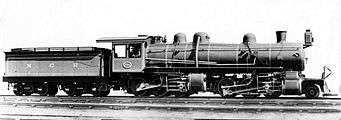1909 in South Africa
| 1909 in South Africa | ||
| 1906 1907 1908 « 1909 » 1910 1911 1912 | ||
|
| ||
Events
- February
- 25 – Mahatma Gandhi is arrested at Volksrust for failure to produce a registration certificate and is sentenced to 3 months imprisonment.
- June
- 15 – Representatives from England, Australia and South Africa meet at Lord's Cricket Ground and form the Imperial Cricket Conference (ICC).
- Mahatma Gandhi embarks in Cape Town for Southampton, England.
- November
- 30 – Mahatma Gandhi and the Transvaal Indian Deputation arrive back in Cape Town.
- December
- 28 – The first manned heavier-than-air powered flight in South Africa is made by French aviator Albert Kimmerling by taking off from the Nahoon Racecourse at East London in a Voisin 1907 biplane.[1]
- Unknown date
- South Africa becomes the first non-European country to join FIFA.
Births
- 19 March – Louis Hayward, South African-born actor. (d. 1985)
- 5 September – Yusuf Dadoo, doctor and politician. (d. 1983)
- 5 December – Bobbie Heine Miller, South African tennis player. (d. 2016)
Deaths
- 13 April – Sir Donald Currie GCMG, shipping magnate and donor of the Currie Cups for rugby and cricket. (b. 1825)
Railways
Railway lines opened
- 4 February – Natal – Creighton to Riverside (Cape), 12 miles 3 chains (19.4 kilometres).[2]
- 1 April – Natal – Vryheid East to Hlobane, 17 miles (27.4 kilometres).[2]
- 18 May – Cape Midland – Barkly Bridge to Alexandria, 54 miles 20 chains (87.3 kilometres).[3]
Locomotives
- Two new Cape gauge locomotive types enter service on the Natal Government Railways (NGR):
- The first five of thirty 4-8-2 tender locomotives, the world’s first true Mountain type locomotive. In 1912 it will be designated Class B on the South African Railways (SAR).[4][5][6]
- A single 2-6-6-0 Mallet articulated compound steam locomotive, the first Mallet type to enter service in South Africa. In 1912 it will be designated Class MA on the SAR.[4][6]
- The NGR begins to modify some of its Class C 4-10-2T Reid Tenwheeler locomotives to a 4-8-2T wheel arrangement to make them suitable for yard work without the risk of derailing as a result of the long ten-coupled wheelbase. In 1912 these will be designated Class H2 on the SAR.[6][7]
References
- ↑ South African Power Flying Association - 1910 to 1920 - Early Flying in South Africa (Accessed on 26 November 2016)
- 1 2 Statement Showing, in Chronological Order, the Date of Opening and the Mileage of Each Section of Railway, Statement No. 19, p. 186, ref. no. 200954-13
- ↑ Report for year ending 31 December 1909, Cape Government Railways, Section VIII - Dates of Opening and the Length of the different Sections in the Cape Colony, from the Year 1873 to 31st December, 1909.
- 1 2 Holland, D.F. (1971). Steam Locomotives of the South African Railways. 1: 1859–1910 (1st ed.). Newton Abbott, Devon: David & Charles. pp. 102–105. ISBN 978-0-7153-5382-0.
- ↑ Holland, D. F. (1972). Steam Locomotives of the South African Railways. 2: 1910-1955 (1st ed.). Newton Abbott, Devon: David & Charles. p. 14. ISBN 978-0-7153-5427-8.
- 1 2 3 Paxton, Leith; Bourne, David (1985). Locomotives of the South African Railways (1st ed.). Cape Town: Struik. pp. 31–33, 36, 84–85. ISBN 0869772112.
- ↑ The Railway Report for year ending 31 Dec. 1908, Natal Government Railways, p. 39, par 14.
This article is issued from
Wikipedia.
The text is licensed under Creative Commons - Attribution - Sharealike.
Additional terms may apply for the media files.
.jpg)

.jpg)